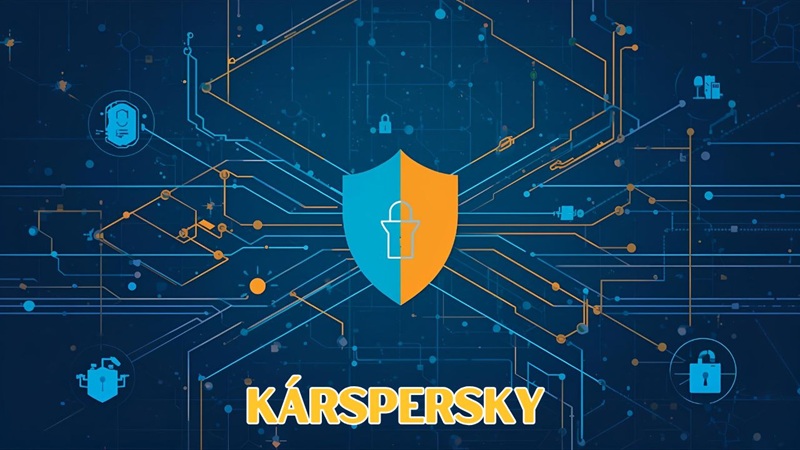In today’s digital world, cybersecurity has become a necessity rather than a luxury. Every online activity—whether shopping, banking, or simply browsing—carries potential risks of malware, phishing, and data theft. One name that consistently emerges when discussing global cybersecurity solutions is Kársperski. While the term kársperski may seem unfamiliar or even a misspelling, it refers to Kaspersky, one of the world’s most renowned cybersecurity companies.
This article provides a comprehensive, step-by-step guide to Kaspersky’s evolution, products, services, and controversies, offering readers a deep understanding of how it has shaped the cybersecurity landscape.
1. The Origin of Kársperski
1.1 How It All Began
The story of Kársperski began in 1989 when Eugene Kaspersky, a Russian computer scientist, encountered the Cascade virus on his PC. Unlike most users who would panic, he chose to study the virus, eventually creating a tool to neutralize it. This curiosity became the foundation of his lifelong mission: to combat digital threats and protect users across the world.
In 1997, Eugene officially founded Kaspersky Lab in Moscow, Russia, along with his colleagues Natalya Kaspersky and Alexey De-Monderik. What started as a small antivirus project quickly turned into a global cybersecurity powerhouse.
1.2 The First Milestones
The first major breakthrough came in 1994 when Kaspersky’s “AntiViral Toolkit Pro (AVP)” won recognition from Hamburg University as the best antivirus software of the year. This achievement gave the company international credibility and opened the door to rapid expansion.
By the early 2000s, Kaspersky had expanded into Europe, Asia, and North America, offering enterprise-grade protection and consumer products. Its approach was unique—it didn’t just react to viruses; it predicted and prevented them through proactive detection technologies.
2. Evolution of Kársperski’s Security Solutions
Kaspersky’s journey from a small antivirus firm to a global cybersecurity leader reflects decades of innovation and adaptation. The company’s success rests on its diverse range of security products catering to both personal and professional users.
2.1 Consumer Products
Kaspersky Standard
This is the company’s foundational product, offering real-time protection against malware, spyware, and ransomware. It also blocks phishing websites and ensures that users can browse safely. Its lightweight design ensures high performance without slowing down devices.
Kaspersky Plus
An upgrade to the Standard version, Kaspersky Plus includes a fast VPN, password manager, and data leak checker. This version appeals to users seeking privacy in addition to antivirus protection.
Kaspersky Premium
At the top tier, Kaspersky Premium integrates identity protection and parental controls, making it ideal for families and professionals. It also includes priority customer support, ensuring immediate assistance when needed.
Kaspersky Safe Kids
This product empowers parents to monitor and guide their children’s digital behavior. It allows for screen-time limits, location tracking, and content filtering, helping create a safer online environment for kids.
2.2 Business and Enterprise Solutions
Kaspersky’s influence extends far beyond home users. It offers enterprise-grade security frameworks for businesses of all sizes:
-
Endpoint Security Solutions – Protects computers, servers, and mobile devices in corporate networks.
-
Cloud Security – Safeguards data stored in cloud environments such as AWS, Azure, and Google Cloud.
-
DDoS Protection – Prevents cybercriminals from disrupting websites or applications through large-scale attacks.
-
Mail Server Protection – Filters out malicious attachments and phishing emails, defending against data breaches.
These tools help corporations maintain integrity, productivity, and compliance while minimizing operational risks.
3. Kársperski’s Global Research and Innovation
3.1 The GReAT Team
One of Kaspersky’s most significant contributions to global cybersecurity is the Global Research and Analysis Team (GReAT). This elite group of security experts investigates cyber-espionage, ransomware attacks, and state-sponsored hacking campaigns.
GReAT has been instrumental in exposing several large-scale cyber threats, including Stuxnet, Duqu, and Equation Group, which reshaped how the world perceives digital warfare.
3.2 AI and Predictive Threat Analysis
Modern cybersecurity isn’t just about reacting—it’s about predicting. Kaspersky uses artificial intelligence (AI) and machine learning algorithms to analyze behavior patterns of malware and detect new variants even before they strike.
The company’s database of over 400 million users worldwide provides real-time feedback, allowing it to constantly evolve and strengthen its threat detection systems.
4. Kársperski’s Reputation and Achievements
4.1 Awards and Recognition
Over the years, Kaspersky has earned numerous awards from independent testing organizations such as AV-TEST, SE Labs, and AV-Comparatives. These bodies consistently rate Kaspersky’s products among the top performers for protection, usability, and performance.
4.2 Market Share and Global Reach
Today, Kaspersky operates in over 200 countries and serves more than 400 million individual users and 250,000 corporate clients. Despite challenges from Western governments, the company maintains a strong market presence across Europe, Asia, the Middle East, and Latin America.
5. Controversies and Geopolitical Tensions
5.1 U.S. Government Ban
In 2017, the U.S. Department of Homeland Security banned federal agencies from using Kaspersky products. Officials cited concerns that the Russian government could potentially exploit the software to conduct surveillance or cyber operations.
Although no concrete evidence was made public, the decision significantly affected Kaspersky’s reputation in North America.
5.2 Google Play Store Removal
In 2024, Google removed Kaspersky apps from the Play Store following an updated interpretation of U.S. restrictions. Kaspersky described this move as an “overinterpretation” and maintained that its operations were fully compliant with international privacy standards.
5.3 The Company’s Response
To address security concerns, Kaspersky launched a Global Transparency Initiative (GTI) in 2017. This program relocated parts of its data processing and storage infrastructure to Switzerland, where independent organizations could audit its code and operations.
The GTI aims to prove that the company has nothing to hide, reinforcing trust among users worldwide.
6. Understanding Kaspersky’s Core Technology
6.1 Multi-Layered Protection
Kaspersky employs a multi-layered defense strategy that combines:
-
Signature-based detection (known threats)
-
Heuristic analysis (pattern recognition)
-
Behavioral analysis (real-time monitoring)
-
Cloud-based intelligence (collective global feedback)
These layers ensure comprehensive protection from both old and emerging threats.
6.2 Privacy and Data Security
The company emphasizes data encryption, zero-trust frameworks, and secure password management. It also promotes a privacy-first approach, ensuring users maintain control over their information.
Kaspersky’s VPN technology further ensures anonymity by masking user IP addresses and encrypting connections, an essential feature in today’s surveillance-heavy digital ecosystem.
7. Kársperski in the Age of AI-Driven Threats
7.1 Rise of Smart Attacks
Cybercriminals are now leveraging AI to create more sophisticated attacks. Phishing campaigns, deepfake scams, and automated hacking tools have become common.
Kaspersky counters these challenges through adaptive defense mechanisms that evolve using real-time machine learning insights. Its Kaspersky Security Cloud adjusts protection levels dynamically based on user behavior and current global threat conditions.
7.2 Internet of Things (IoT) Security
With billions of devices connected globally, IoT has introduced new vulnerabilities. Kaspersky’s IoT Security framework monitors device communication, detects anomalies, and prevents botnet infiltration—ensuring smart homes and industries remain secure.
8. Corporate Social Responsibility and Education
8.1 Cyber Awareness Initiatives
Kaspersky invests heavily in educational programs to raise cybersecurity awareness among students, professionals, and governments. Its global campaigns encourage users to adopt safer online practices, promoting digital literacy and responsible technology use.
8.2 Environmental Commitment
The company also supports eco-friendly data centers and sustainable infrastructure, reducing its carbon footprint while maintaining performance efficiency.
9. Comparing Kársperski to Other Cybersecurity Brands
While Kaspersky is among the top names in cybersecurity, it competes with other major players such as Norton, McAfee, Bitdefender, and ESET.
Here’s a quick comparison:
| Feature | Kaspersky | Norton | Bitdefender | McAfee |
|---|---|---|---|---|
| Real-Time Protection | ✅ Excellent | ✅ Good | ✅ Excellent | ✅ Good |
| VPN Integration | ✅ Fast | ✅ Moderate | ✅ Fast | ✅ Moderate |
| Parental Controls | ✅ Advanced | ✅ Basic | ✅ Advanced | ❌ Limited |
| System Performance | ✅ Lightweight | ⚠️ Heavy | ✅ Lightweight | ⚠️ Moderate |
| Global Transparency | ✅ Audited in Switzerland | ❌ Limited | ❌ Limited | ❌ Limited |
Kaspersky stands out for its balance of performance, privacy, and transparency, making it a strong choice for both personal and enterprise users.
10. The Future of Kársperski and Cybersecurity
10.1 Evolving Threat Landscape
The digital future will bring quantum computing, 6G networks, and hyper-connected ecosystems. While these innovations promise convenience, they also introduce new security risks.
Kaspersky’s research teams are already preparing for post-quantum encryption—technologies designed to protect data even from quantum-powered attacks.
10.2 Expanding Global Trust
Despite political challenges, Kaspersky continues to rebuild trust by opening new transparency centers in Europe and Asia. These facilities allow regulators and partners to inspect code, ensuring the absence of hidden vulnerabilities or government influence.
10.3 AI-Enhanced Security
The next phase of Kaspersky’s strategy revolves around AI-driven cybersecurity ecosystems. By integrating automation, behavioral prediction, and instant global updates, the company aims to provide zero-day protection—neutralizing threats before they cause harm.
11. How to Choose the Right Kaspersky Plan
Selecting the right Kaspersky product depends on your security needs and budget:
| User Type | Recommended Plan | Key Features |
|---|---|---|
| Individual Users | Kaspersky Standard | Antivirus + Malware + Web Protection |
| Privacy-Focused Users | Kaspersky Plus | VPN + Password Manager + Data Leak Alerts |
| Families | Kaspersky Premium | Identity Protection + Parental Controls |
| Small Businesses | Kaspersky Endpoint Security | Device & Server Protection |
| Enterprises | Kaspersky Cloud + DDoS Protection | Large-Scale Network Defense |
Each plan includes 24/7 updates, minimal system load, and user-friendly dashboards, ensuring smooth experiences for both tech experts and casual users.
12. Final Thoughts on Kársperski
Kaspersky—or as some may spell it, kársperski—stands as one of the most influential and innovative cybersecurity companies of our time. From Eugene Kaspersky’s humble beginnings to becoming a global digital defense leader, the company’s journey embodies resilience, innovation, and trust.
Despite controversies and bans, Kaspersky has continued to evolve, prioritizing transparency and independence. Its robust lineup of security products—combined with global threat intelligence and AI-driven defense—positions it as a guardian of the modern digital world.
As cyber threats grow more complex, one thing remains clear: kársperski continues to be a critical force in ensuring that individuals, families, and corporations can operate safely in the ever-evolving cyber universe.
For more info visit Stylish Fame


Pingback: Kársperski — A full, long-form guide
Comments are closed.